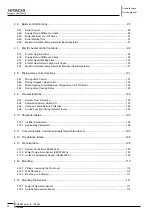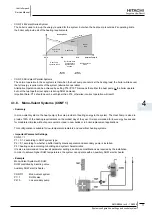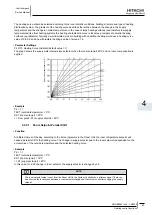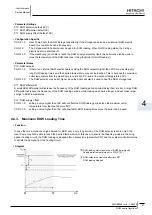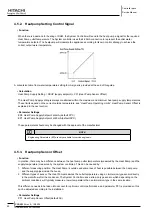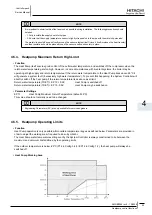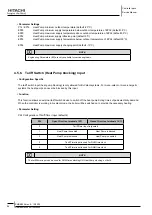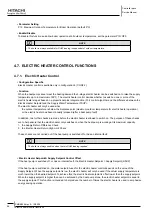
83
Heating control functions
SMGB0066 rev.0 - 12/2009
Controller pack
Service Manual
4
The heating curve should be selected according to the local climatic conditions, building structure and type of heating
distribution system. The gradient of the heating curve describes the relation between the change in the supply
temperature and the change in outside temperature. In the case of large heating surfaces (and therefore low supply
temperatures) like floor heating systems the heating characteristic curve is less steep compared to smaller heating
surfaces (eg radiators). Typically a well-insulated, modern building with underfloor heating would use a heating curve
value of 0.4-0.6 and one with radiator heating a value of around 1.6.
Parameter Settings
•
P4 OTC Heating Curve Gradient (default value 1.1)
The graph shows the supply water temperature setpoint, when the room setpoint=20°C and no room compensation is
applied.
Outside Temperature (ºC)
Supply water temperature (ºC)
Example
•
P4 = 1.1,
TEXT (outside temperature) = 0°C,
SR1 (room setpoint) = 20°C
=> From graph, S1 (supply setpoint) = 49°C
4.3.2.1. room Setpoint Parallel Shift
function
•
At different times of the day, according to the time programme in the Room Unit, the room temperature setpoint will
cause a parallel shift of the heating curve. The change in supply setpoint due to the room setpoint is dependant on the
actual value of the outside temperature and the selected heating curve.
Example
•
P4 = 1.1
TEXT (outside temperature) = 0°C
SR1 (room setpoint) = 18°C
=> S1 (supply setpoint) = 45°C
In this case, for a 2K change in room setpoint, the supply setpoint is changed by 4 K
note
The room setpoint value is sent from the Room Unit to the System Controller by a wireless signal. There can
-
be a short delay in response between a room setpoint change and the system controller changing the supply
setpoint.


